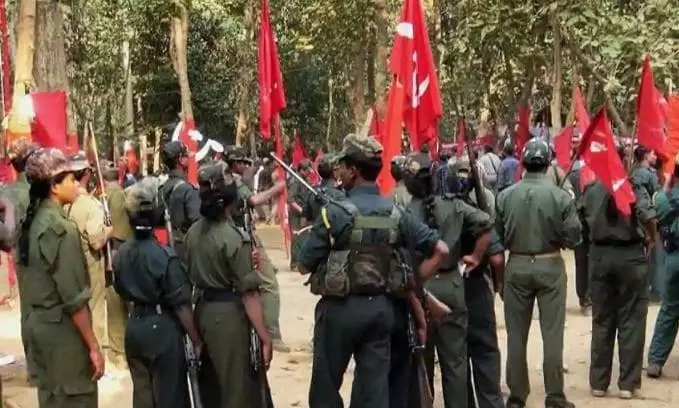
Maoists, who surrender disclose exact locations and movement patterns of their ageing commanders to security officials, which has led to the capture of many senior Naxal leaders. File photo
Old and trapped: How security forces took down top Maoist leaders
In last few months, security forces have managed to neutralise more than a half a dozen senior Naxal leaders; police officers explain how they brought them down

Security officials have attributed the recent elimination of several top Naxal leaders to a combination of critical intelligence from surrendered Maoists, who disclosed exact locations and movement patterns of their ageing commanders along with intensified, coordinated police operations across Naxal-affected states. The rapidly shrinking safe havens for the Reds has further given momentum for the crackdown in recent months.
On September 11, the Chhattisgarh police managed to neutralise Modem Balakrishana, a central committee member of the Communist Party of India (Maoist) in Bhaludiigi hill area of state’s Gariaband district.
Four days later, on September 15, the Jharkhand police operating with the CRPF commandos eliminated another central committee member Sahdeo Soren who carried a reward of Rs 1 crore, along with two Maoists. In May, security forces managed to kill party’s general secretary Nambala Keshava Rao alias Basavaraju in Chhattisgarh.
Also read: Maoist with Rs 2-lakh bounty, 3 others nabbed in Chhattisgarh; 10-kg IED seized
In all, the security forces have managed to neutralise more than a half a dozen central committee members in recent months.
Ageing, vulnerable leaders
Speaking on the condition of anonymity to be able to candidly discuss sensitive operational matters, a senior police official from a Naxal-affected state told The Federal, “Top Maoists move around in a what is called a close protection team of around two dozen cadres. In recent months, some of the Maoists who surrendered before the police were part of the close protection team of leaders. In case of Basavaraju, the information came from a couple who surrendered and was very close to the leader. These surrendered Maoists are coming in with a wealth of information for security forces.”
Officials also added that most of the top Maoist leaders are now in their 60s and 70s and not so physical agile, which has hampered their movement in the tough terrains of Maoists-hotbeds.
No safe houses
The party cadre is in disarray. Earlier top leaders would leave for safe sanctuaries for long periods when security forces were hot on their trail.
“But now leaders have to move along with cadres to keep their morale up. They cannot move away from hotbeds now. Their absence from the battlefield will hit the already dwindled morale of cadres. Hence they are getting trapped by the security forces. Their safe house within the Naxal-affected areas are also no longer safe now since surrendered Maoists are revealing their locations to security forces,” added another senior police official, who also spoke on the condition of anonymity.
Also read: Beaten by security forces in bastions, Maoists plan to decentralise, spread across India
In many cases, surrendered Maoists are leading the security forces to the safe houses of their leaders.
Political backing
“Political backing for the anti-Maoist operations across all-affected states have also proved to be a major factor. Police forces in all states are working in close coordination,” pointed out Pankaj Shrivasatava, Madhya Pradesh police’s special director general heading anti-Maoist operations.
His counterpart in Chhattisgarh police, Vivekanand, additional director general of police (Naxal Operations) said that meticulous planning and execution of operations against Maoists have also played a key part.
“Whatever raw inputs we get are corroborated on the ground. All stakeholders sit together to plan the operation to ensure its flawless execution. No intelligence input about Maoists, however insignificant it may seem, is allowed go waste or slip through cracks,” he added.

